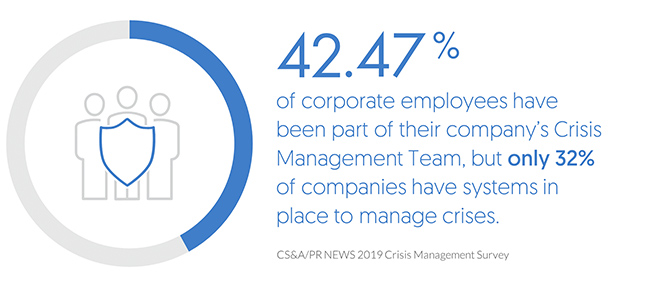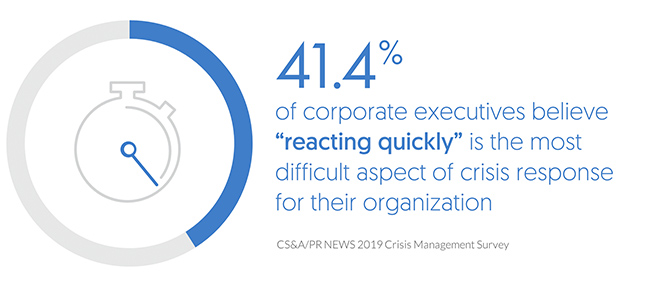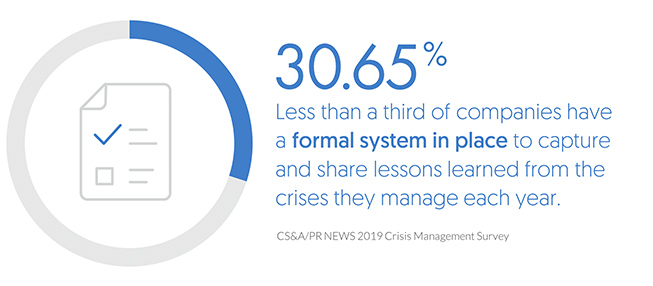Glossary Term:
Critical Event Management
See why we’re different
Award-Winning Critical Communications
Find out why over 30,000 organizations across the globe rely on OnSolve to deliver fast, effective alerts when they matter most.
Fast, Relevant Risk Intelligence
Discover how AI-powered and analyst-vetted risk intelligence allows you to respond faster and improve outcomes when a critical event occurs.
Unmatched Expertise & Ease of Use
Learn how our power is in our people with decades of experience. We understand the challenges you face every day, and our platform was designed with you in mind.
Have communication challenges?
What Is Critical Event Management?
A critical event is a disruptive incident which poses serious risk or threat to assets and/or people. Critical event management (CEM) includes the resources, tactics and organizational alignment that facilitates effective risk mitigation and incident response before, during and after a crisis. Done well, effective critical event management promotes stronger organizational resilience. Its components enable continuous improvement through the following elements:
- Proactive threat awareness
- Cross-functional coordination and communication flows
- Integrated technology and systems
- Post-event analysis
Critical Event Management is not the same thing as business continuity management, risk management, or crisis management. CEM works to enhance and complement those practices. Successful critical event management for business requires a combination of effective proactive tactics and reactive capabilities that align all departments and mitigates negative events before, during and after they have occurred. This is how you ensure future company success.
Why Use Critical Event Management from OnSolve®?
Incidents can occur in the blink of an eye. Organizations need state-of-the-art technology on their side to effectively anticipate, prepare, respond and adapt. Survival isn’t enough anymore – now is the time to thrive and prosper.
OnSolve’s critical event management platform helps organizations, business leaders, day-to-day system users and response teams ensure the safety and protection that leads to improved outcomes. The technology delivers the most important information quickly, with the irrelevant data automatically filtered out. This way you can make informed decisions and guide effective action. It also provides easy access to response and business continuity plans on any device with a user-friendly interface resulting in more time to react and confidence in your execution.
Add and Manage Contacts
- Add or edit them manually
- Import them from a spreadsheet
- Synchronize information with an existing database
Choose Who, How, and When
- Choose who you want to receive the message
- Pick the channel: Voice message, text message or email (or all 3)
- Hit “send” for immediate delivery, or schedule to deliver later
Get Useful Feedback Reports
- Know who received your message and when
- Get answers to any questions you asked in your message
- Easily identify any numbers or addresses that were undeliverable
What is a Critical Event?
A critical event is a disruptive incident which poses serious risk or threat to assets or people. Critical event management (CEM) gives an organization or emergency management team the capabilities to manage critical events — and protect people, assets and operations. At a basic level, a CEM platform consists of three elements: risk intelligence, mass notification and incident management.
How can organizations modernize Critical Event Management?
Simply put, modern CEM is faster and more accurate. It takes those basic capabilities and optimizes them to keep up with an increasingly dispersed, complex and mobile world, a steady rise in the frequency and intensity of critical events, and the explosion of available data and data sources. It adds a powerful layer of artificial intelligence to risk intelligence — and builds on a strong foundation of critical communications and incident management. In doing so, modern CEM enhances the ability of security teams, travel teams and executives to understand and proactively respond to critical events throughout the entire business resiliency lifecycle.
Who should use modern Critical Event Management?
Any business that needs to protect the safety of its employees and facilities or government agency responsible for keeping the public safe. Anyone who oversees business continuity, communications strategy or IT security for an organization or local, state or county agency needs critical event management. Modern critical event management helps response team keep people and assets safe and create better outcomes.
What is a Critical Event Management Platform?
Overall, critical event management software gives an organization the capability to manage critical events and protect people, assets and operations. It can complement crisis management software. At a basic level, the platform consists of three elements:
- Risk Intelligence: AI aggregates complex data on any given situation, tracking feeds from thousands of sources, sorting through the noise and then synthesizing and distributing the data so organizations, residents and employees can act on it — in real time.
- Critical Communications: Response teams can now send targeted, time-sensitive notifications to every person they need to reach during a disaster. Once the crisis is over, secure notifications and alerts also help ensure business continuity and disaster recovery.
- Incident Management: These systems accelerate and simplify crisis response. Using a mobile-first platform, they allow response teams to mobilize immediately via real-time visibility and targeted coordination. Secure, interactive instructions are easy to update and distribute. A chronological audit trail of every action taken enables teams to conduct a thorough post-event analysis for future improvements.
Simply put, modern CEM is faster and more accurate than traditional human-only analysis. It takes those basic capabilities and optimizes them by adding a powerful layer of artificial intelligence to risk intelligence and building on a strong foundation of critical communications and incident management. In doing so, modern critical event management software enhances the ability of security teams, travel teams and executives to understand and proactively respond to critical events throughout the entire lifecycle of organizational resilience.
Why is Critical Event Management important?
Today we are dealing with an increasingly dispersed, complex and mobile world, a steady rise in the frequency and intensity of critical events and the explosion of available data and data sources. Without the right integrated technology in place, a critical event can pose serious risk to your organization’s future, including people, places, property, revenue, operations, brand reputation and overall continuity. That’s why a platform that combines critical communications, incident management and AI-powered risk intelligence is crucial to stay ahead of disaster. Here are some of the primary functions that critical event management makes possible:
- Devise strategies to prevail during uncertain conditions, as well as decide on future courses of action.
- Recognize the early signs of crisis and warn employees against potential aftermaths while enabling them to take necessary precautions.
- Deliver timely and relevant critical event notifications to coordinate amongst many different departments to overcome emergency situations.
- Facilitate activities and processes that help managers and employees analyze and understand events which may cause uncertainty in the organization.
- Respond effectively to changes in the organizational culture.
Before a crisis makes headlines, crisis management teams and executives will know about it. CEM provides both the best intelligence available and mobile-first mass notification tools to give everyone the ability to mobilize, alert and track people, assets and the event itself as it unfolds at home or abroad.

What are the benefits of Critical Event Management?
Resilient organizations are distinguished by their ability to ensure good things continue to happen for all of their stakeholders despite disaster, while simultaneously resuming peak performance with minimal disruption. Critical event management software enables organizations to achieve that big ask with ease. With its help you’re better equipped to detect, act and recover during critical events to mitigate risk and improve outcomes. It aligns resources across your organization to proactively identify and analyze threats to people, places and property, rapidly communicate with stakeholders and activate response teams according to business strategy. Simply put, critical event management helps organizations achieve better outcomes during a crisis. It enables faster response times, shorter recovery times and consistent actions.
Who Should Use a Critical Event Management Platform?
The answer is:
- Any business that needs to protect the future of the company and the safety of its people, places and property
- Any government agency responsible for keeping the public safe
- Anyone who oversees business continuity, communications strategy or IT security for an organization or government agency
A critical event management platform helps organizations, business leaders, day-to-day system users and response teams ensure the safety and protection that leads to improved outcomes. The technology delivers the most important information quickly, with the irrelevant data automatically filtered out. This way you can make informed decisions and guide effective action. It also provides easy access to response and business continuity plans on any device with a user-friendly interface. More time to react and more confidence in your execution — can you afford not to keep your stakeholders safe, informed, assured and productive?
What are Critical Communications?
Critical events pose a threat to public safety and business continuity. Critical communications let response teams send targeted, time-sensitive notifications to every person they need to reach. It can deliver geo-targeted, multi-language messages via phone, email, SMS, desktop alerts, IPAWS, voice and more.
Why it matters
A reliable communication source is critical to protecting public health and ensuring public safety during a crisis. Once the crisis is over, secure notifications and alerts also help ensure business continuity and disaster recovery.

What is Incident Management?
When a crisis happens, no one has time to download, study and digest a crisis communications plan. Advanced incident management systems accelerate and simplify crisis response. Using a mobile-first platform, they allow response teams to mobilize immediately via real-time visibility and targeted coordination. They provide secure, interactive instructions that are easy to update and distribute. They also feature a chronological audit trail of every action taken before, during and after an event.
Why it matters
Customized emergency response plans and recovery procedures minimize downtime and mitigate disruptions. As residential areas and organizations worldwide face an increase in the number and variety of threats (both natural and human-made), a broader approach to incident management is needed. Disasters require emergency teams to be prepared to respond quickly and accurately, with the ability to effortlessly connect and collaborate no matter where or when an event occurs. Once the crisis is over, built-in audit trails help improve future response.


Mass Notification 101 for Business Leaders
Learn how to improve the relationships with key stakeholders with mass notifications.
